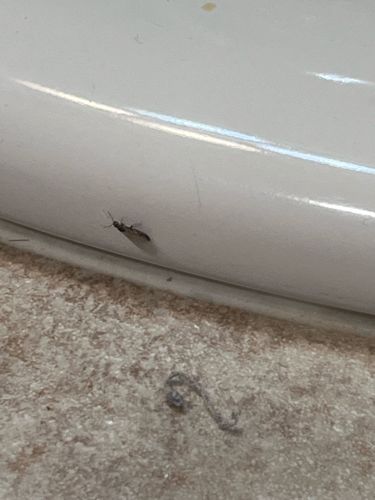Drain Fly / Moth Fly / Filter Fly
Scientific Name: Psychodidae (various genera and species, e.g., Clogmia albipunctata, Psychoda alternata)
Order & Family: Order: Diptera, Family: Psychodidae
Size: Typically 2-5 mm (0.08-0.2 inches) in length, including wings.

Natural Habitat
Drain flies thrive in moist to wet environments rich in decaying organic matter. Indoors, they are commonly found in bathrooms, kitchens, and basements, breeding in sink drains, shower drains, floor drains, sump pumps, sewage systems, and even leaky pipes and condensation pans. Outdoors, they can be found in sewage treatment plants, compost piles, and wet soil.
Diet & Feeding
Adult drain flies primarily feed on liquids, such as nectar, water, and organic films. Larvae feed on decaying organic matter, fungi, and microorganisms found in their moist breeding sites.
Behavior Patterns
Psychodidae exhibit a fluttering, erratic flight pattern. Adults are active at dusk and dawn. Larvae are aquatic or semi-aquatic, developing in moist environments rich in organic matter. Lifecycle from egg to adult can be as short as 1-2 weeks under optimal conditions, leading to rapid population growth.
Risks & Benefits
Risks: Primarily a nuisance pest, especially when present in large numbers indoors. While they do not bite humans and are not known to transmit diseases, they can be a sign of plumbing issues or excessive organic buildup in drains. In sensitive environments like hospitals, they can be a vector for mechanical transmission of bacteria from sewage. Benefits: In certain ecosystems, the larvae play a role in breaking down organic waste. However, their presence indoors usually indicates a sanitation problem.
Identified on: 8/7/2025